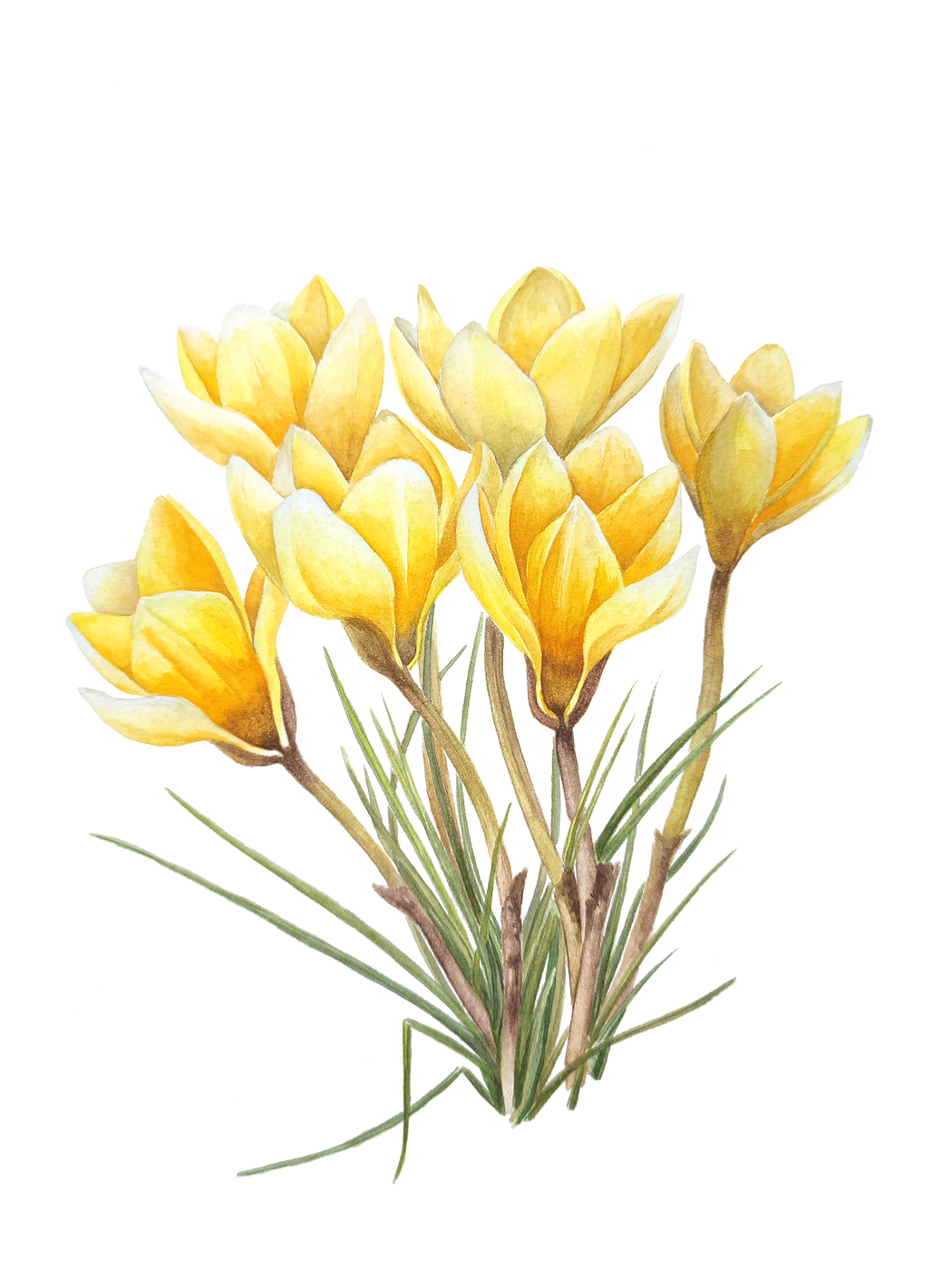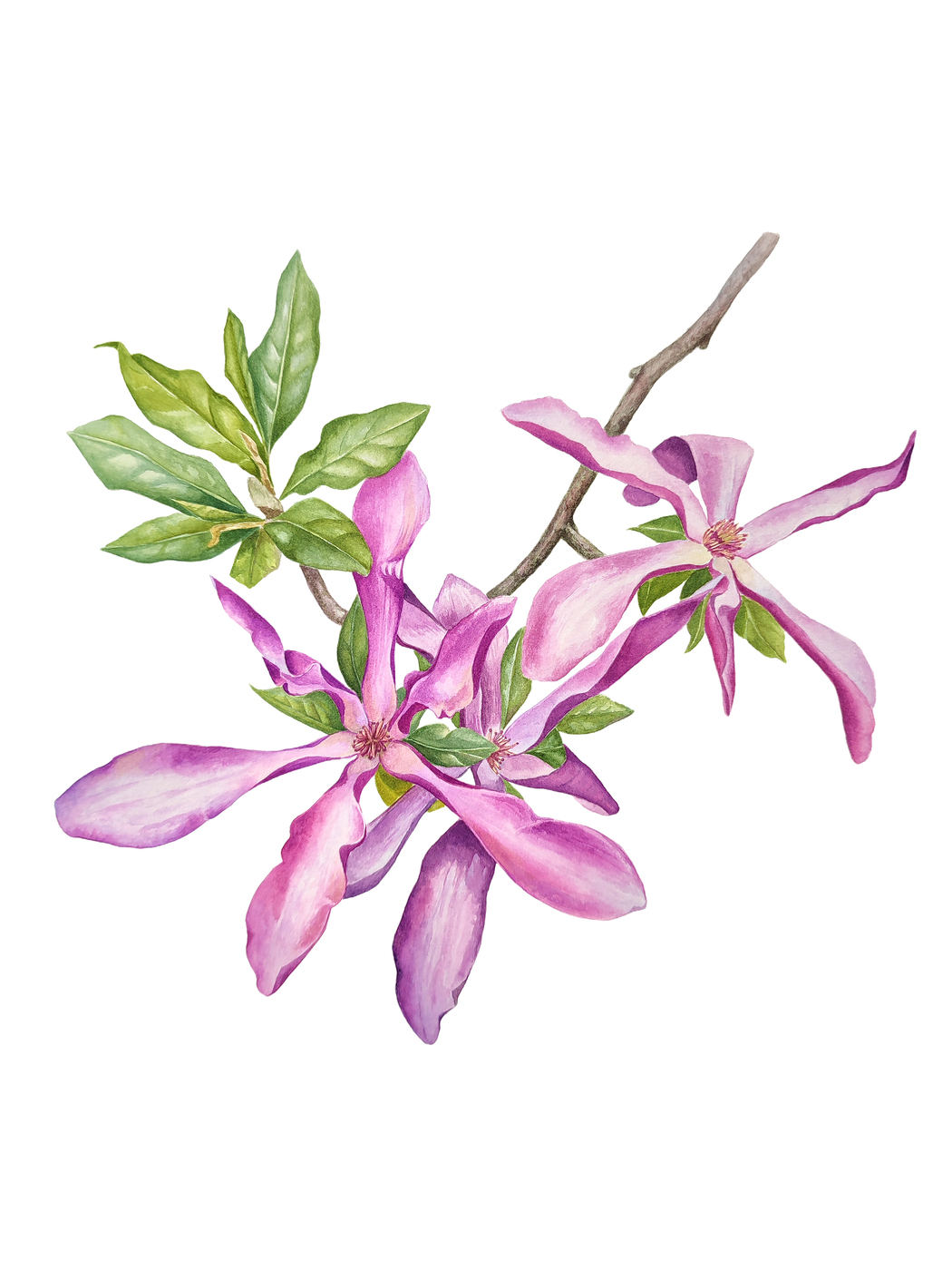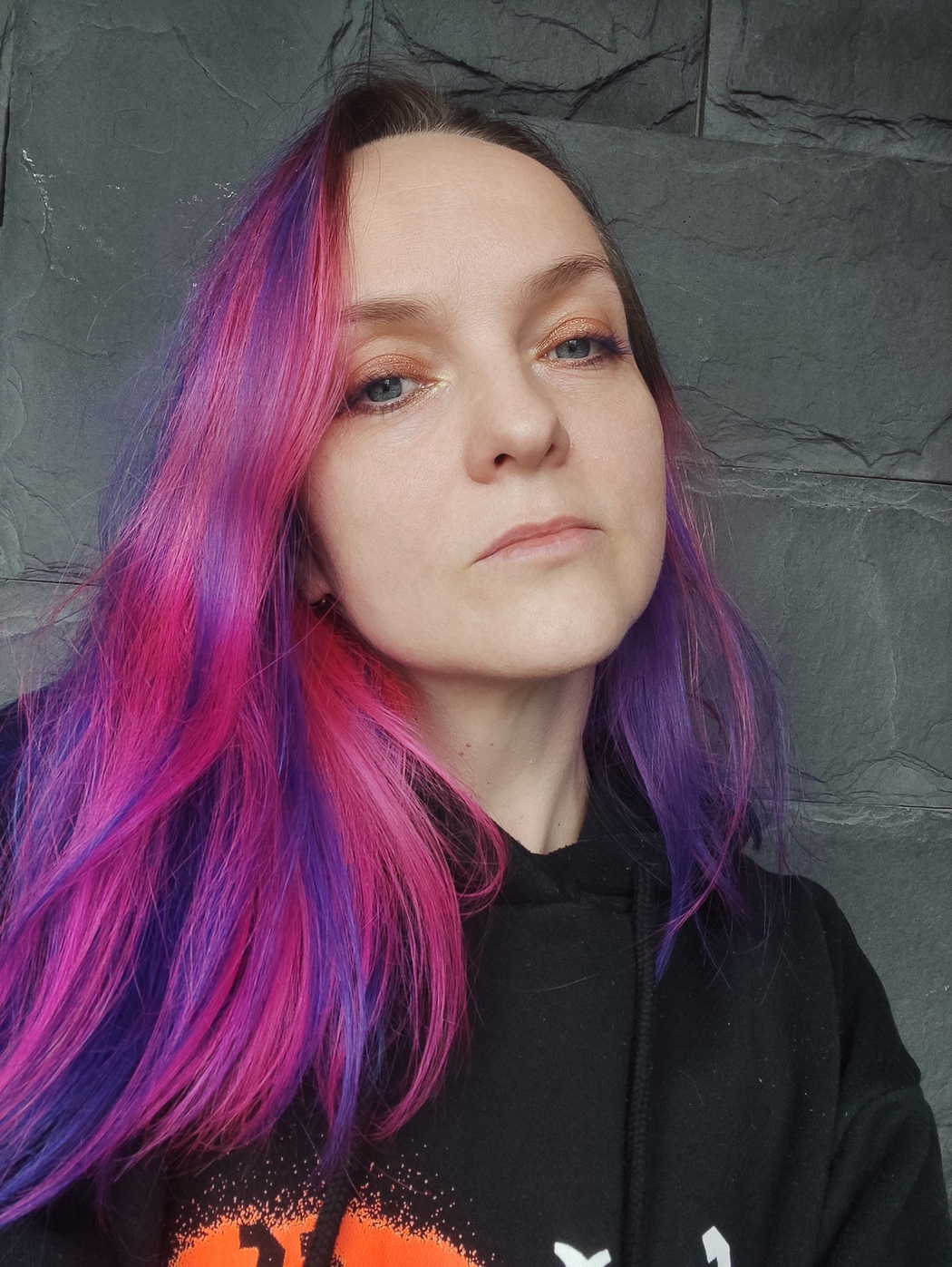Oleksandra Serhiienko
Your works blend watercolor and pencil with a strong focus on botanical elements. What draws you to nature as your main subject?
Nature has always been a source of inspiration and strength for me. Observing it is a way to “ground myself” in the moment, to feel a nearly childlike wonder and delight, an aesthetic pleasure. These are feelings often missing in everyday life, filled with tedious “adult” tasks. Nature is a simple and accessible way to bring touches of joy and even happiness into one’s life.
I know many stories of people who, in moments of crisis or even tragedy, planted and cared for flowers. This reveals an inner strength and the psyche’s ability to recover after terrible shocks.
How has your scientific background in physics influenced your artistic approach, if at all?
I am glad I chose this field, even though I ultimately didn’t pursue a scientific career. You can forget formulas, but the interest in and respect for the laws of the universe remain. I don’t like it when creativity is set in opposition to scientific thinking — I believe these two ways of understanding the world can harmoniously coexist.
True scientific discoveries happen through the courage to look beyond the known. The same is true in art: we are impressed by unconventional solutions and challenges to established practices. In my artistic practice, I strive for conciseness: minimal means — maximum meaning. And for me, this is close to the beauty of physical formulas (yes, I really do talk about the beauty of formulas!).
 Oleksandra Serhiienko | Yellow Crocus Flowers | 2025
Oleksandra Serhiienko | Yellow Crocus Flowers | 2025
Many of your works evoke a sense of silence, memory, and quiet resilience. How do these emotional layers emerge in your creative process?
These themes are truly important to me both as a person and as an artist. Every time I choose a subject — consciously or spontaneously — I ask myself: what does this mean to me? Why these flowers, colors, lines attract me right now? What inside me at this moment demands expression?
At the same time, I understand it’s not always appropriate to burden a botanical work with deep meaning. Sometimes the viewer just wants to see beauty. But even a momentary admiration is an expression of emotional resilience, the ability to recover. This especially applies to the Ukrainian viewer now fighting for physical existence amid Russian aggression.
Your work is part of international exhibitions across very different cultures. Do you notice differences in how your art is received in Ukraine, Turkey, Brazil, and the UK?
I have only just begun exploring this question for myself and haven’t found a definitive answer yet. But one of my missions is that by participating in international art projects, I aim to increase the presence of contemporary Ukrainian art on the global cultural map.
 Oleksandra Serhiienko | Touch | 2025
Oleksandra Serhiienko | Touch | 2025
You describe your goal as “manifesting the invisible.” What does this mean to you in a practical sense, when you sit down to paint?
This artistic goal is probably also a result of my scientific background — the desire to look deeper, to investigate, to understand the essence. Practically, it means searching for artistic means and techniques that encourage the viewer to pause, to reflect, to look at the painting like in a mirror and feel something hidden inside themselves.
To allow oneself to experience emotions — longing or admiration, nostalgia or inspiration — and therefore, to live fully and vividly.
How do you choose the plants or botanical details you depict? Do they carry symbolic meaning for you?
Most of the subjects I choose have an intimate meaning. They are memories from childhood — summers at my grandparents’ village, barefoot on the grass, flowers, cows, ants, trees, scraped knees.
But I am also inspired by the present. Often while shopping, I stop to look at leaves or flowers, take photos, remember the place. Later I can return to it for inspiration. People who see the finished work might not know which observations or memories it embodies. But the main thing is the dialogue that arises between the viewer and the work, when they read something deeply their own in it. Then the painting gains layered meanings. That is truly valuable.
 Oleksandra Serhiienko | Magnolia Constellation | 2025
Oleksandra Serhiienko | Magnolia Constellation | 2025
What role does time play in your painting — both in the process and in what the work expresses?
Time is something I really lack. It must be divided between household duties, motherhood, and creativity. My younger son has a severe disability, and I can only create at home, combining painting with care and routine. But I am learning not to blame myself for the so-called “inefficiency” and instead to appreciate rare moments of silence and solitude.
This lack of time also affects my choice of techniques. I adore multilayered watercolor, but I haven’t yet taken on large formats — they require deeper focus and time. In terms of meaning, my works are less about capturing a specific moment and more about conveying a state: calm or despair, acceptance or denial, fullness or emptiness.


Leave a Reply